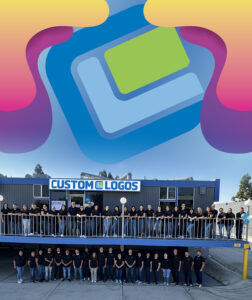
Printing your company name on popular products (like hats, mugs, and calendars) is a simple way to spread brand awareness. When done correctly, these promotional products benefit the end user just as much as the company they promote. Many branded promotional products act as great giveaways; the consumer gets a free (and often practical) item, while the company gets its name in front of potential consumer eyes, increasing brand recognition.
Creating those products is the first step — using them to actually boost your bottom line is the next. Not all branded items have to be free giveaways. If a promotional product is useful enough, you can actually charge a little something for people to buy it, even if it’s branded with your company name.
Read our expert tips and guidance on how to sell promotional products that boost your brand and revenue:
Narrow Your Market
It’s a big business world out there — you don’t need to create items for every single industry or niche. Decide on one or two areas that make the most sense to target, based on what products you’ll use to promote your brand, and which industries would most likely use those products. For vendor companies, it makes sense to create promotional products that your clients need anyway. If your company sells medical products, consider a sports water bottle that orthopedic surgeons can give out in their customer welcome packages. If you manufacture car parts, you may go for an air freshener that repair shops can give to customers when each job is complete.
By choosing just one or two areas to focus on, you narrow your audience down to a manageable size, allowing you to focus on marketing your promotional products to their specific needs. Once you’ve determined your target market, find ways to reach that audience; through direct mail offers, email blasts, or attending industry conferences, for instance.
Offer Samples
Create physical samples of your business’ products that have your brand name on them. This will show potential customers exactly what their item can look like at the end of production. If a potential account is large enough, you may print up several options to leave with a promotional product decision-maker. You can even consider adding that company’s logo to the item, alongside your own. In that way, you are providing promotional products for them to use with your own branding, too. If you are setting up a booth at a trade show, bring plenty of options for conference attendees to browse.
Follow Up
Purchasing promotional products is not at the top of any company’s to-do list — so it’s your job to remind your contacts about deals and deadlines. If you feel like a company is on the fence about making a purchase, you may offer free shipping (or another compelling discount) to help push them through the purchase funnel. Once you have the “yes,” call and place the order yourself. Don’t wait for the person to fill out an online form — make it your job to do all of the extra work. The fewer hoops you make your consumers jump through, the easier it will be for them to decide to purchase with you again in the future.
On the flip side, you will also find people who prefer to order on their own, without any interference. So, make sure your promotional products are also incredibly easy to order without help. This is best accomplished through an online order form or one that is faxed to you. Make it a possibility for your consumers to order on their own, in a quick and simple manner, or to have you take care of all the heavy lifting, hassle-free. That way, you’ll capture both types of consumers.
Solicit Feedback
As you sell your promotional products, send a follow-up “thank you” email to each consumer, along with a simple customer service survey. Make the survey as short as you possibly can, while still including the most impactful questions. Ask about the quality of the products they received, the pricing, and more.
Consider designing it so they can rate their level of satisfaction with the products; and remember to add space where they can explain their rating (this is especially useful if one particular product gets poor ratings, so you can attempt to identify why the product didn’t please). Find out what products the company would buy from you in the future. Always leave a spot for people to write whatever they want — you’re likely to learn a wealth of information. As you read through the survey responses, adjust your production and sales tactics to meet consumer demands, desires, and concerns.
It’s All About the Value
Figuring out how to sell promotional products can feel like a daunting process, especially when most promotional items are seen as free giveaways only. The truth is, if you’re offering real value to your consumers in some way, custom promotional products spread positive buzz about your company, and can even make you a little bit of money. Start with the steps in this article, and adjust them based on your particular industry and consumer responses. Find ways to offer a needed item at a reasonable cost — if you can achieve those two things, most companies won’t mind at all that you add your own branding to the items.



